
All categories
Featured selections
Trade Assurance
Buyer Central
Help Center
Get the app
Become a supplier

(1854 products available)








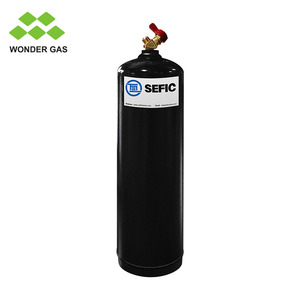
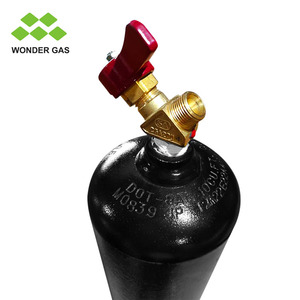









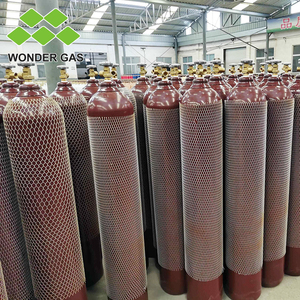


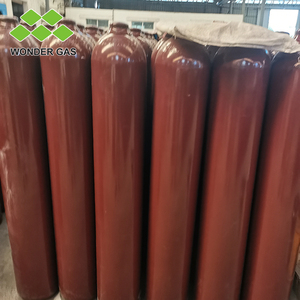


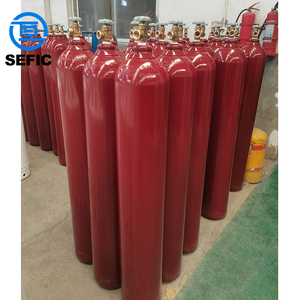

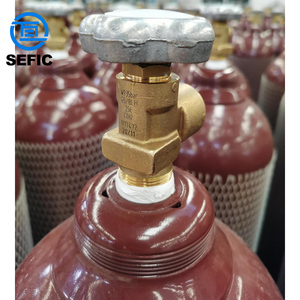







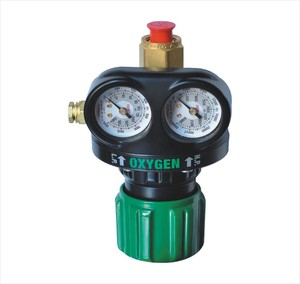



Acetylene pressure regulators are available in several configurations depending on the precise application and incorporated characteristics. Acetylene is a flammable gas used in welding and cutting activities and thus needs strict management. Several kinds of acetylene regulators include:
Single Stage Acetylene Regulator
For uncomplicated, low-pressure work, the one-phase controllers are appropriate. These Acetylene gas regulators contain a single control section that decreases the cylinder pressure in a specific outlet. They suit operations that do not require continuous pressure fluctuations, like cutting or light welding.
Two-Stage Acetylene Regulator
In conditions where constant pressure is essential, double-phase regulators are appropriate. They operate in two phases by first decreasing the cylinder pressure in the first stage and then passing it to the second stage for further reduction. This process stabilizes outlet pressure even if cylinder pressure fluctuates with gas extraction. Acetylene is suitable for welding applications where accurate pressure control is critical.
Automatic Acetylene Regulator
Automatic regulators are fitted to monitor outlet pressure without manual adjustments. Such regulators use sensors to modify outlet pressure per changing system parameters. This piece of equipment is suitable for large-scale production where pressure consistency is vital for safety and efficiency. For example, in industrial welding and mass component manufacture, automatic pressure regulators can stabilize and optimize production procedures.
Tick Regulator
Multi-stage regulators combine the characteristics of single and double regimes by attaching several regulation stages. These are useful in complicated operations where different pressure levels are necessary at distinct system points. Such regulators suit large-scale or multi-process production with different welding or cutting operations requiring distinct pressures. These regulators provide improved accuracy and flexibility by enabling simultaneous pressure reductions.
Welding and Metal Fabrication
In welding and metalworking, acetylene pressure regulators are widely used. An Acetylene welding regime controls the acetylene flow during oxy-acetylene welding, which easily combines metals. Because of their precise control over pressure, they ensure that metal receives a consistent and accurate flame during the welding process. This is important in creating well-fused structures having the proper structural integrity and stability in construction work. Moreover, these regulators improve safety by preventing acetylene flow irregularities that may generate flame risks during welding.
Cutting and Beveling
Acetylene cutters employ acetylene pressure regulators to support precision and safety during oxygen-acetylene cutting and beveling operations. These cutting heads must produce the flame required to cut through thick steel plates or other metals. By controlling the acetylene flow, regulators guarantee the flame type and size necessary for efficient and secure cutting. Additionally, irregular acetylene supply might cause dangerous situations and decrease cut quality. Regulators are vital in construction, shipbuilding, and automobile manufacturing, where strong, accurate metal cutting is required.
Plumbing and Piping
Beyond welding and cutting, acetylene pressure regulators are helpful in the plumbing sector. They assist in brazing pipes, joining materials commonly used in plumbing systems. Brazing uses an acetylene-fueled flame to join metals and maintain a solid, secure connection. The flame temperature and control are regulated by regulators to make sure plumbing systems have effective operation and durability. Any instability in the flame may produce weak joints, resulting in future leaks or system failures. Therefore, these regulators must undertake plumbing repairs and constructions.
Aerospace and Automotive Engineering
Acetylene pressure regulators maintain flame precision in high-tech industries such as automobile and aeronautics engineering. Welding and cutting operations must meet strict quality and safety requirements in these sectors. Precision flame control is required, which is achieved by acetylene controllers. Made Aerospace and automotive components undergo rigorous quality control to ensure no flaws occur. Thus, any flaw in the manufacturing processes will severely impact component quality. That's why these components are processed with utmost precision, and any flaw is unacceptable. They are extensively used in areas where weight, efficiency, and structural integrity are paramount. Therefore, precise flame control for such a flame is vital, and acetylene pressure regulators play a vital role.
Key Features
Acetylene regulators generally have distinct features appropriate to their function. Here are a few:
Two-Stage Pressure Regulation: A professional acetylene pressure regulator has a double stage that minimizes and stabilizes outlet pressure to give precise regulating. This restriction minimizes pressure variations by stabilizing outlet pressure even as cylinder pressure decreases with gas extraction. Such stabilization guarantees that the flame maintains consistent operation during welding or cutting, improving process precision.
Integrated Check Valve: A built-in check valve provides safety by preventing backfire, which occurs when flame reverses the regulator. The check valve stops this flame from coming back into the regulator, offering further protection to the user and equipment during operation.
High-Strength Material Construction: The acetylene regulators are built with robust materials such as brass or stainless steel to withstand high flame and pressure. In addition, the material used must be corrosion-resistant to ensure longer life in hostile working conditions.
Easy-to-Read Pressure Gauges: A competent acetylene regulator incorporates large, clear pressure gauges that are easy to read. Gauges monitor outlet pressure and cylinder levels to ensure that the operation takes place within the safety limits and without any efficient interruptions.
How to Use
The user must begin by securing the acetylene cylinder before beginning operation. The cylinder should be firmly mounted to avoid falling during the cutting or welding process. After securing the cylinder, the user connects the regulator to the cylinder valve. A pure O-ring should be attached between the cylinder and the Acetylene torch to ensure no gas leakage occurs through the connection. Once the regulator is attached, the user must open the cylinder valve slowly to allow acetylene into the regulator. This prevents a sudden release of gas, which can be dangerous. After the valve is opened, the user must adjust the pressure with the regulator adjustment knob to obtain the needed outlet pressure. The user should monitor the regulator gauge to guarantee the right pressure is displayed. The Acetylene will then flow through the torch when ready and securely attached to the regulator. Finally, the user ignites the gas using a friction lighter and cautiously brings the flame to the work area for the procedure.
Maintenance and Repair
To adequately maintain an acetylene pressure regulator, the user will have to conduct frequent examinations to determine any observable detected damage. These checks must cover signs of wear, cracks, or corrosion. Damaged parts must be repaired immediately to guarantee the regulator's effective functioning. Other than repairs, maintenance entails cleaning the regulator stable. Acetylene can create combustion residues that may obstruct internal components over time. Cleaning the stable will prevent this residue from accumulating and ensure smooth operations. Also, lubricate any moving part within the regulator per the the manufacturer's advice. Lubrication enhances moving components' operation and decreases abrasion. Ultimately, store the regulator in a dry area to prevent rusting due to moisture accumulation within components. Consistent checks, repairs, cleaning, lubrication, and proper storage will increase their durability while boosting operational stability and safety.
Quality Components
Acetylene regulators must be constructed with high-quality materials such as brass, stainless steel, or other strong alloys. These materials must be able to withstand intense flame, heat, and pressure without deformation or wear. Such strong materials guarantee long-term usage of the regulators under hostile conditions.
Moreover, regulatory components must be acquired from reputable sources. This way, the users can ensure that they meet safety and operational performance criteria. They must pass quality control tests, ensuring that the equipment works as expected without producing failure modes that may jeopardize safety.
Moreover, ensure that all parts of the equipment, including valves, seals, and gauges, are properly manufactured. This guarantees that pressure controlling and leaking risk will not be an issue. One of the most crucial parts of the equipment is the gauge. It gives pressure reading, and if made of quality materials, it will be accurate.
Finally, use manufacturers' authentic acetylene parts to guarantee that regulators comply with industry requirements. Compliance with these requirements ensures components' safety, reliability, and performance.
Proper Installation and Handling
Installing acetylene regulators safely is vital to avoiding potentially hazardous situations. The regulators should be securely fastened to the valve of the acetylene cylinder using proper threads. This prevents gas leakage, endangering the personnel in the work area. Moreover, the cylinder should be secured in position to prevent its fall and subsequent damage to the regulator or leakage due to unstable position.
Secondly, avoid using oxygen-acetylene mixtures directly since they might create a dangerous condition that endanger people around working areas. The mixture may create an explosive environment that may lead to severe accidents. Ignite the acetylene first, then introduce oxygen slowly to ensure an even mixture and reduce backfire risk. Stay alert and don't let distractions get the better of you when using regulators with combined gases. Distraction may cause technicians to forget proper handling procedures, leading to dangerous accidents.
The area around the regulator should remain free from flammable materials and excessive airflow. This minimizes the chance of fire due to gas leaking unnoticed or backfiring occurring. Finally, users must be informed about using fire extinguishers that are suitable for containing acetylene fires. The fire extinguishers should be positioned nearby to quickly respond in case of an acetylene fire flare-up.
Safety Valves and Pressure Relief
Acetylene regulators incorporate a safety valve intended to relieve excessive pressure within the system. This is crucial, as any failure in pressure regulation can lead to dangerous scenarios, including bursts, which would be calamitous to the environment. Thus, this regulation and continuous monitoring of system pressure are imperative. Overpressure situations must be avoided by installing alarms or automatic cutoff systems to notify personnel of imminent danger.
Users should frequently verify the caution valve operational status and other parts. Any damaged or malfunctioning parts should be replaced immediately. Malfunctioning parts may cause unsafe operations, increasing failure risk. Moreover, a work area comprising hazardous equipment like regulators must have safety signs and barriers. Such barriers ensure that only individuals with appropriate safety knowledge and instructions enter the area. Lastly, personal protective equipment such as gloves, goggles, and face shields must be worn during operations to reduce any potential hazards, such as flame and gas exposure.
A1: The operating pressure range, kind of stage regulation, and outlet ports compatibility with other system parts determine the acetylene regulator selection. Additionally, industry standards, the working environment, and load should be considered.
A2: A pressure changing acetylene regulator controls outlet pressure. The user sets the outlet pressure needed through an adjustment knob. The diaphragm bends and cuts the acetylene flow to the outlet and adjusts the outlet by this adjustment force. The regulator then maintains a steady outlet pressure.
A3: Acetylene gas cannot be used with single-stage pressure regulators to attain a steady flame during welding or cutting. This is because this kind of regulator cannot stabilize outlet pressure, leading to a dangerously irregular flame.
A4: Yes, backfire is very dangerous as it brings fire into the regulator. This creates a dangerous working atmosphere and may cause the regulator to explode. Luckily, built-in check valves prevent backfiring danger by inhibiting backfire.
A5: Most Acetylene regulators are made of brass and steel. These are strong materials that can sustain intense flames, gas, and pressure. They also guarantee long-term use.